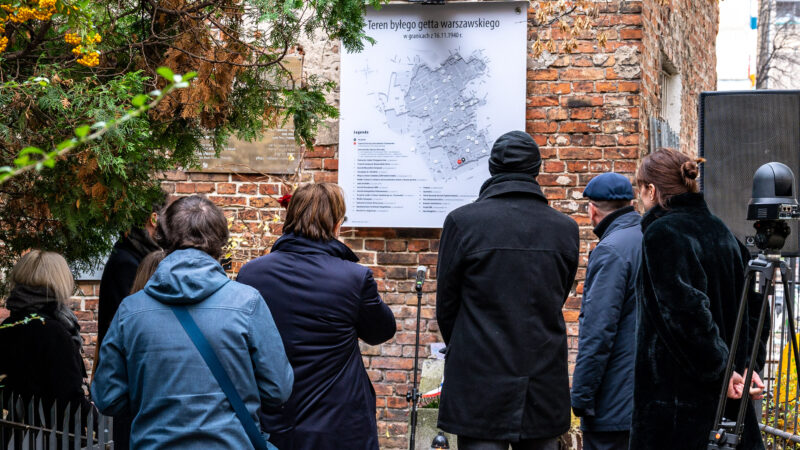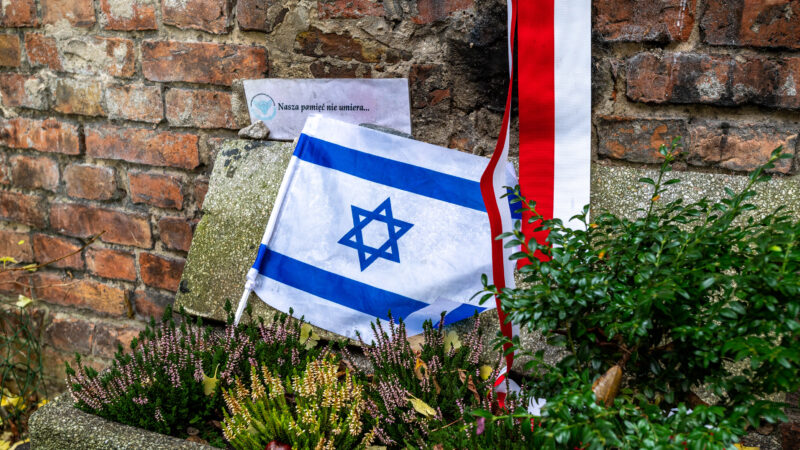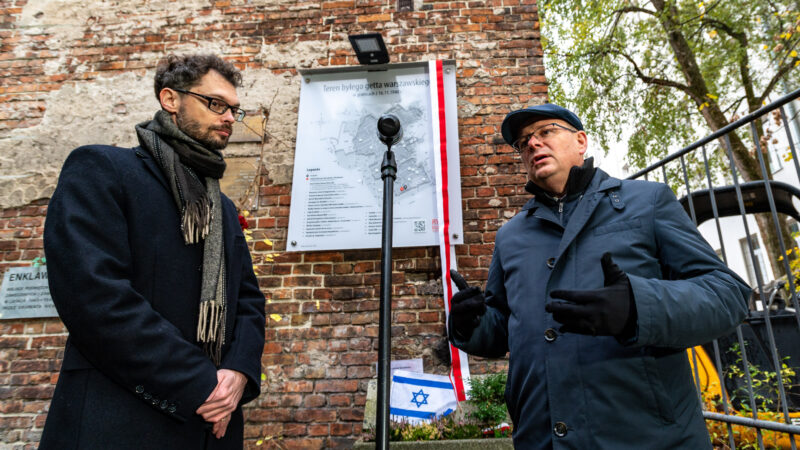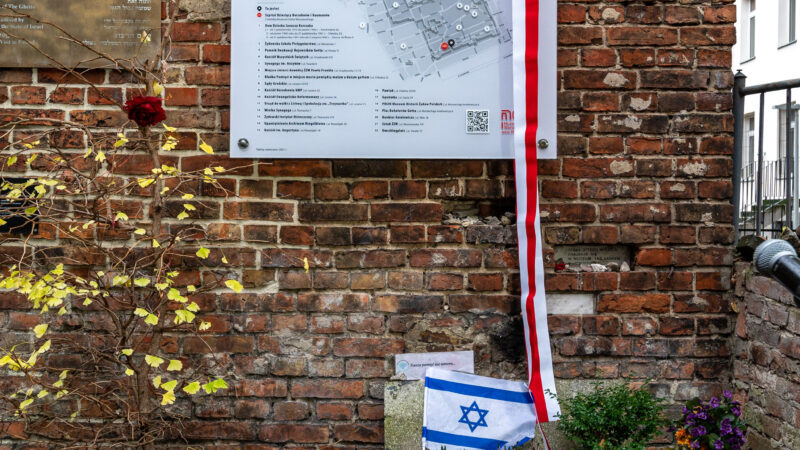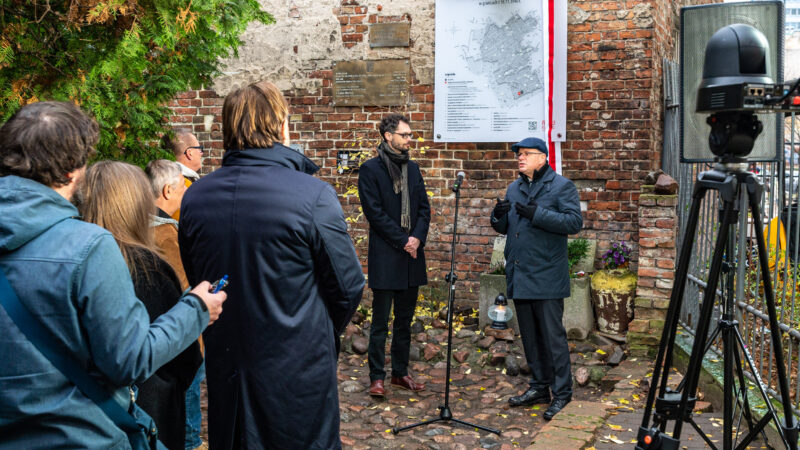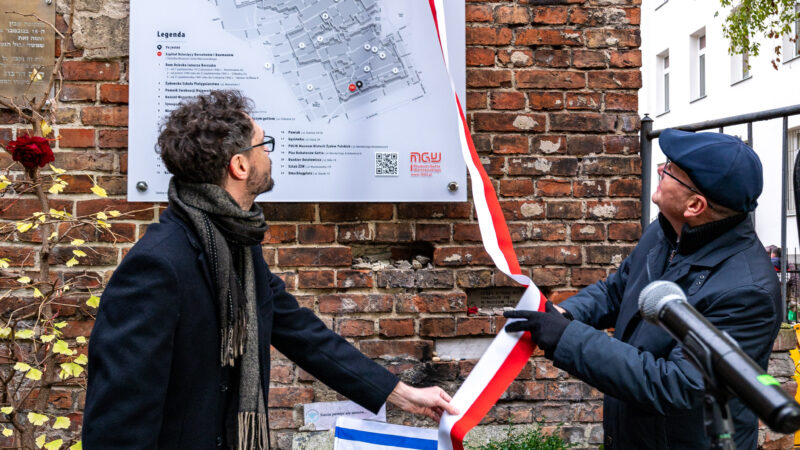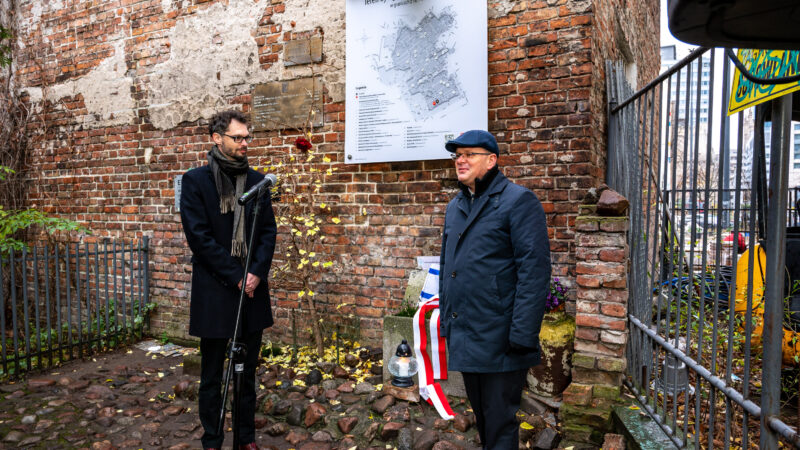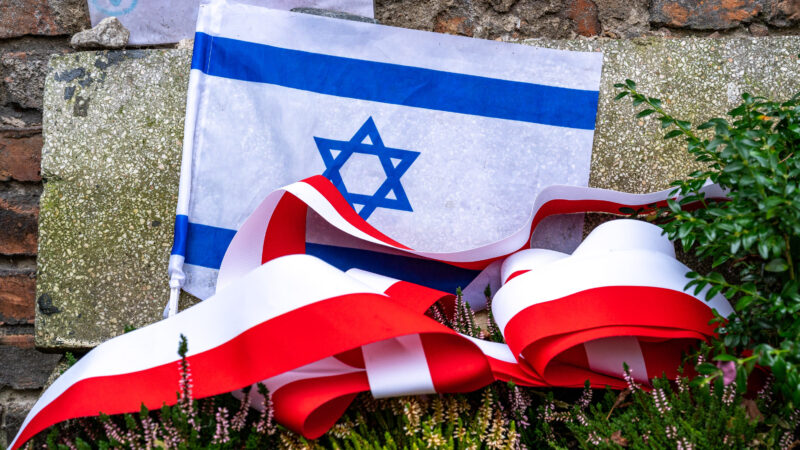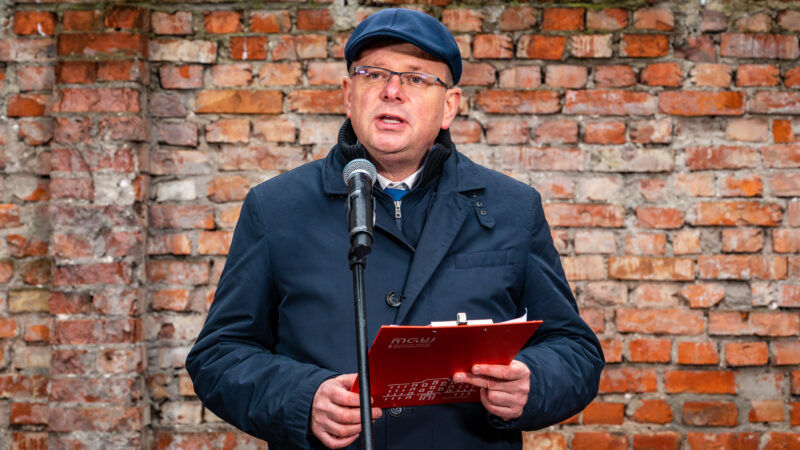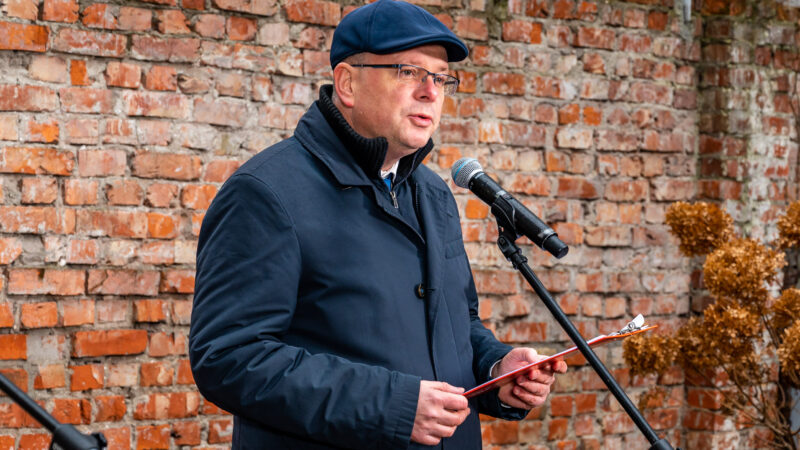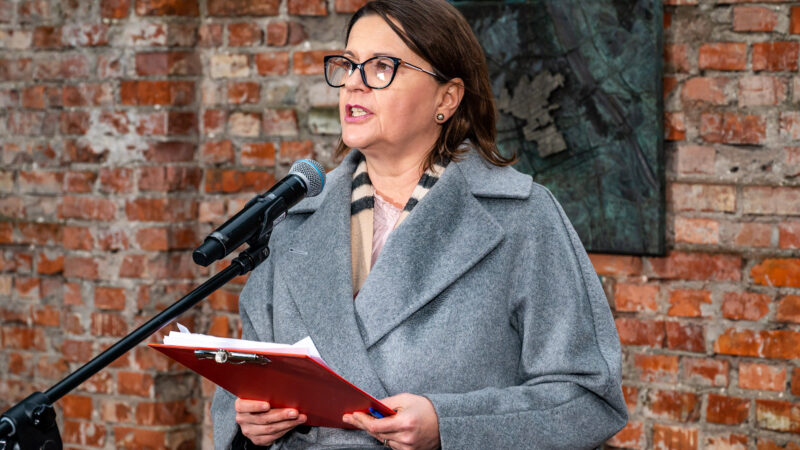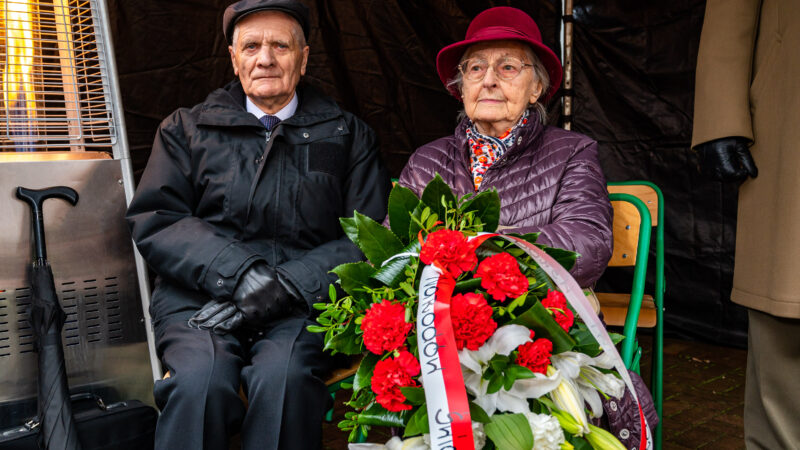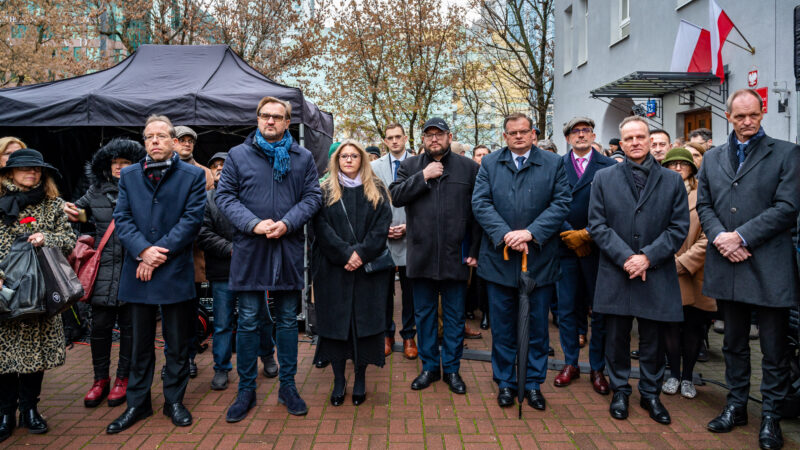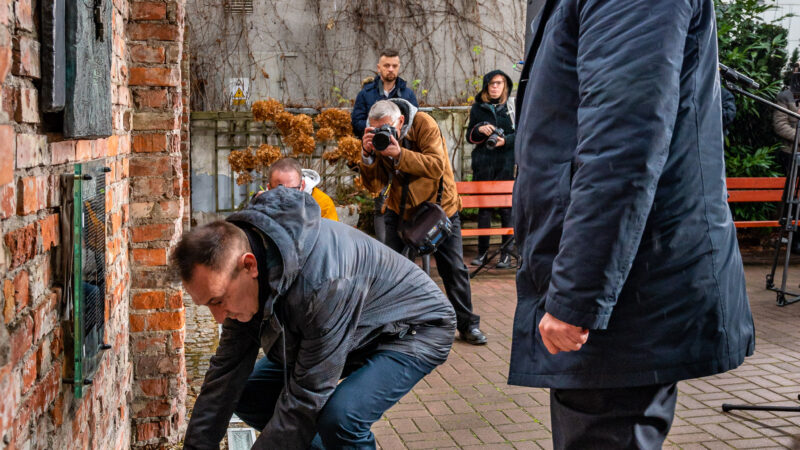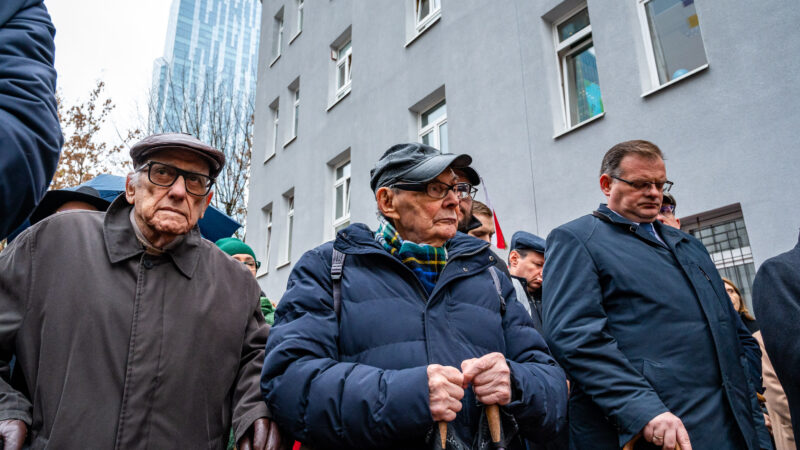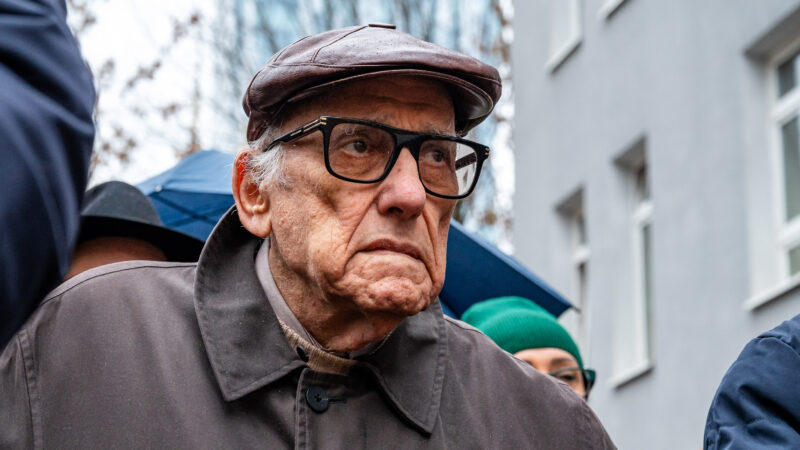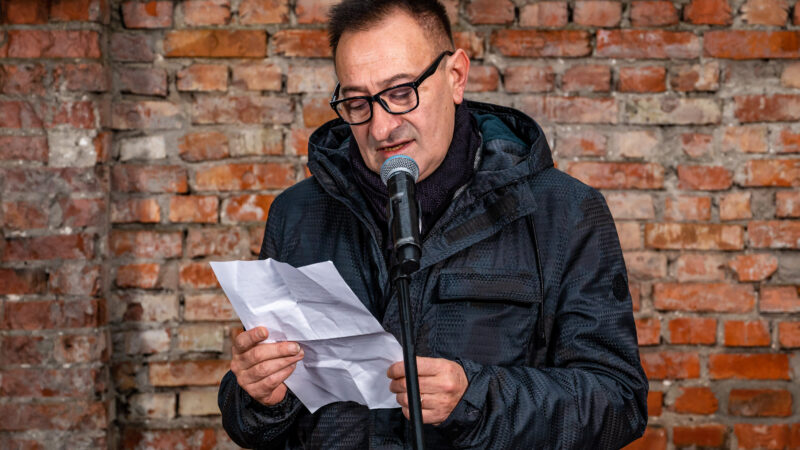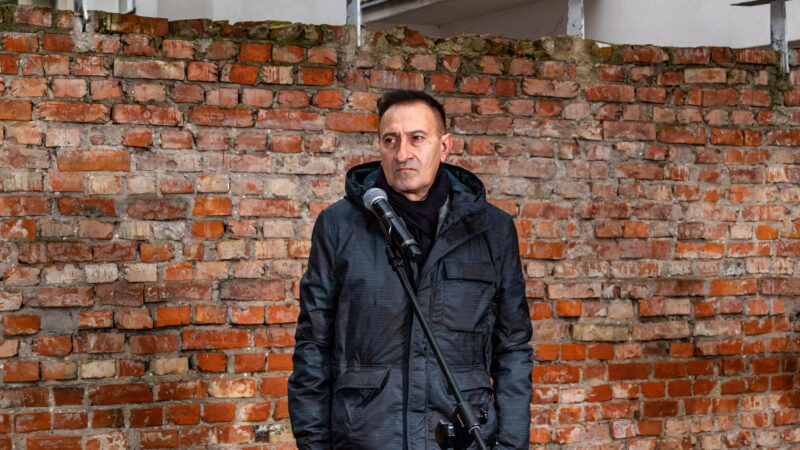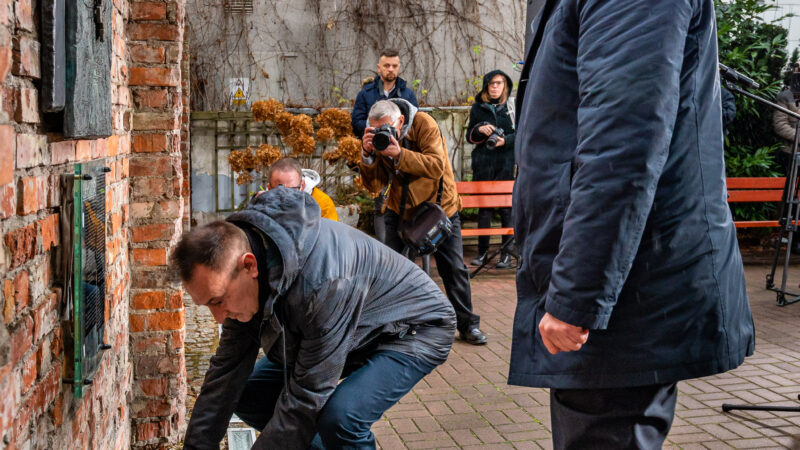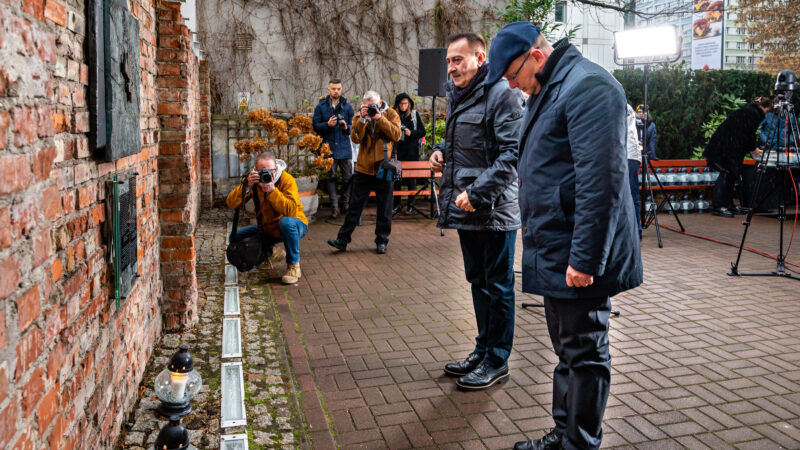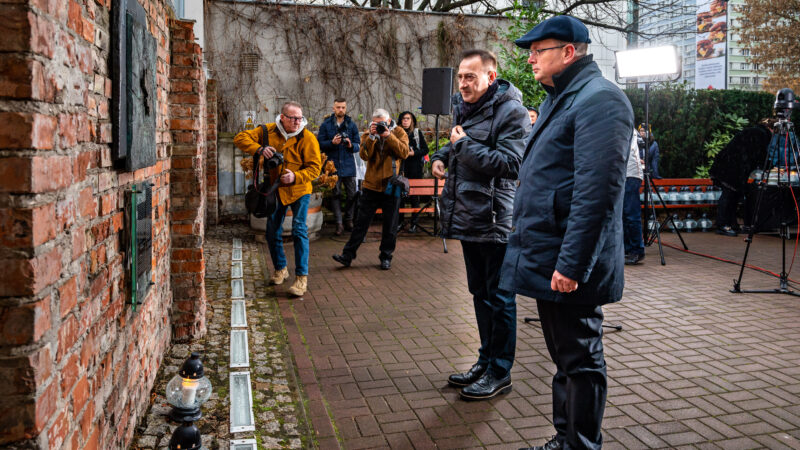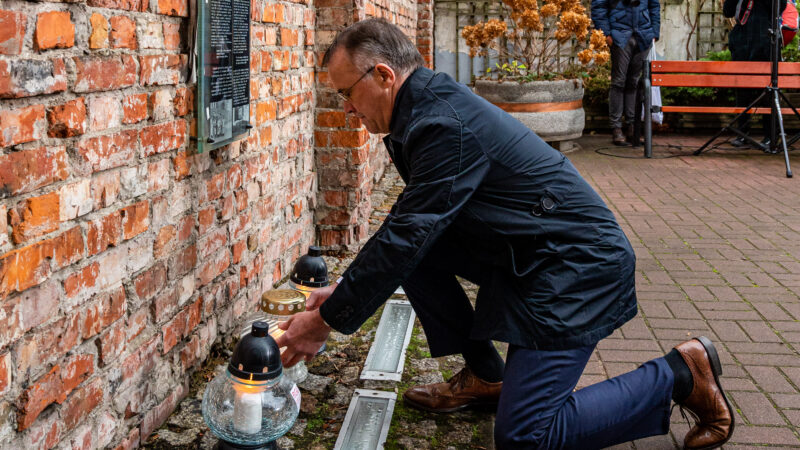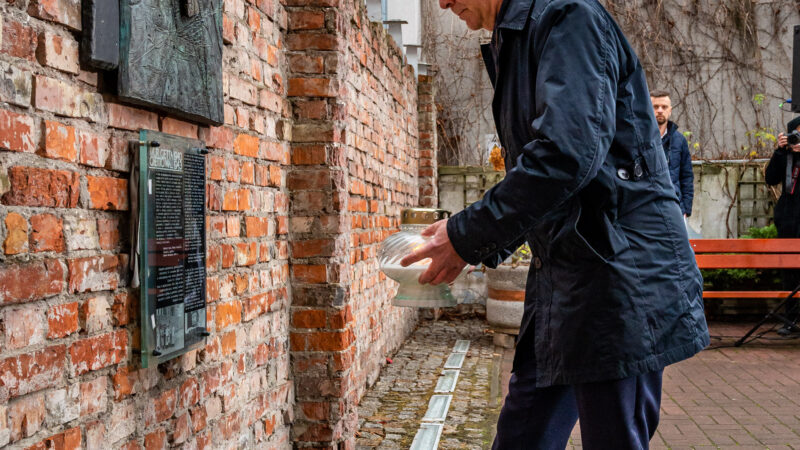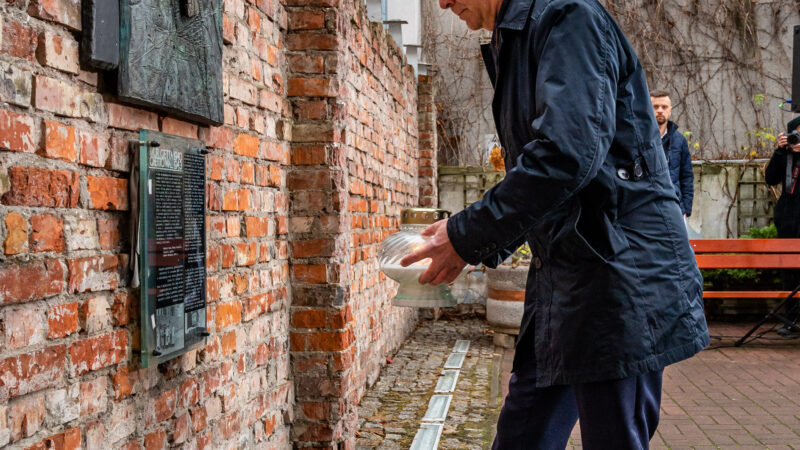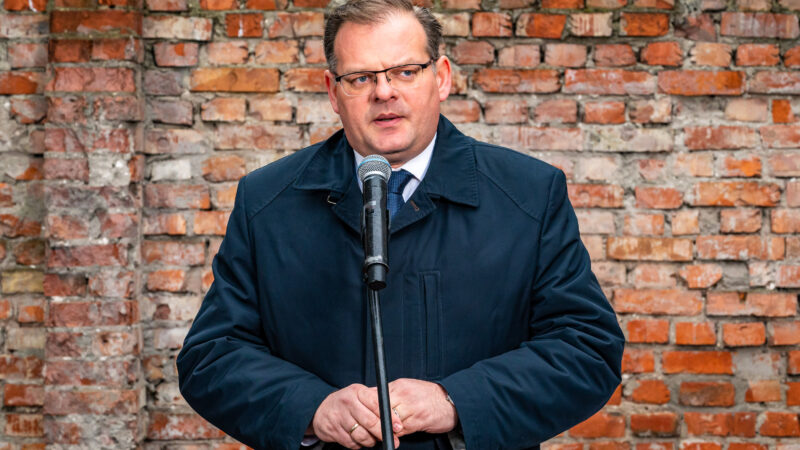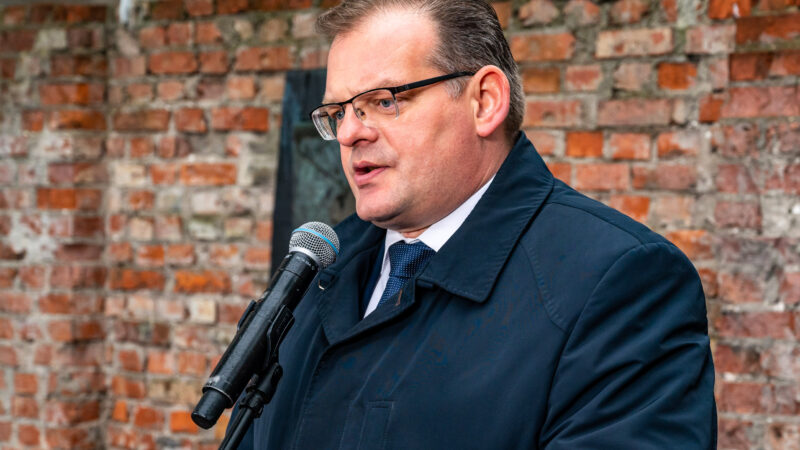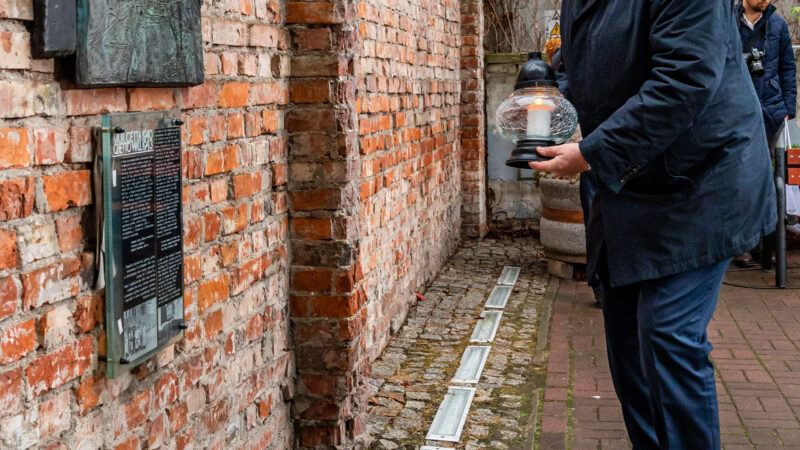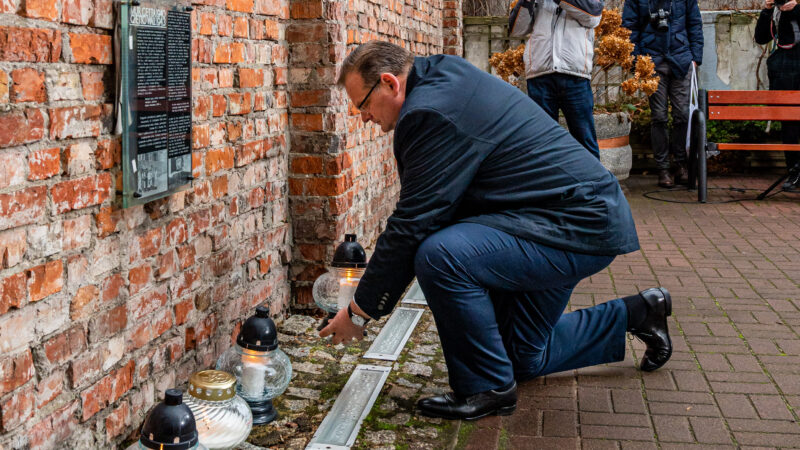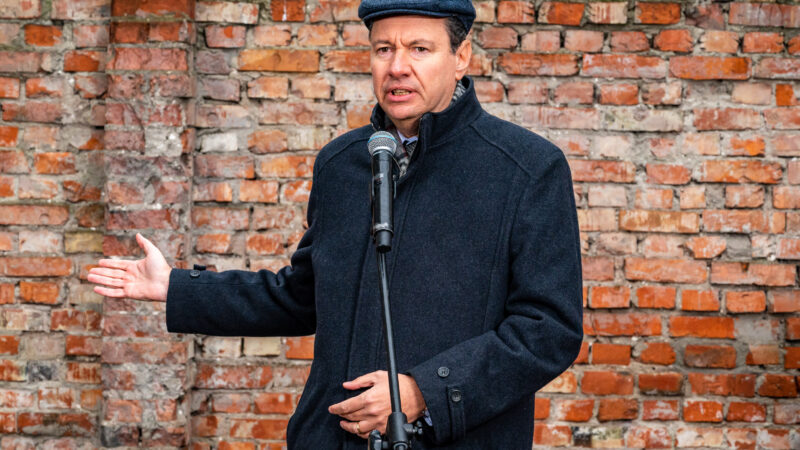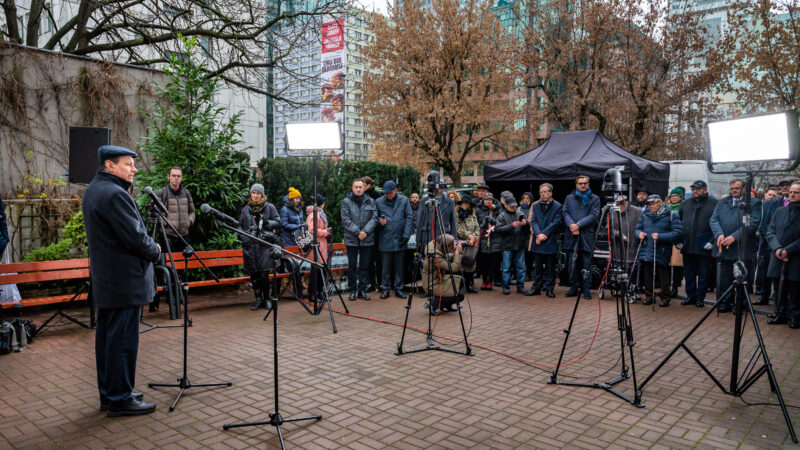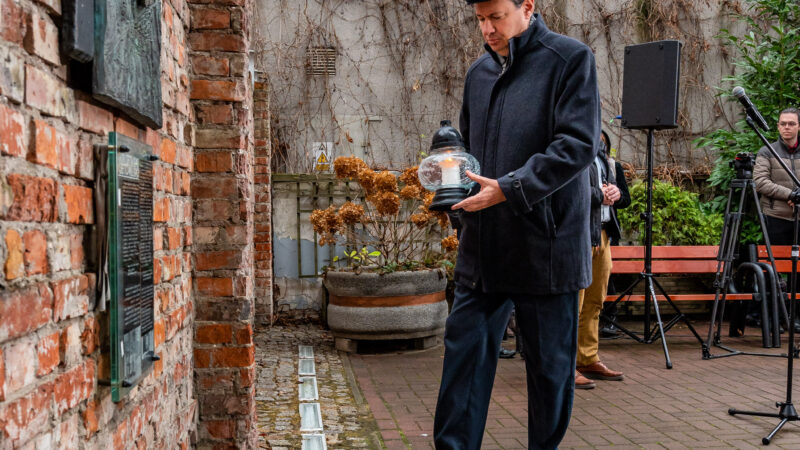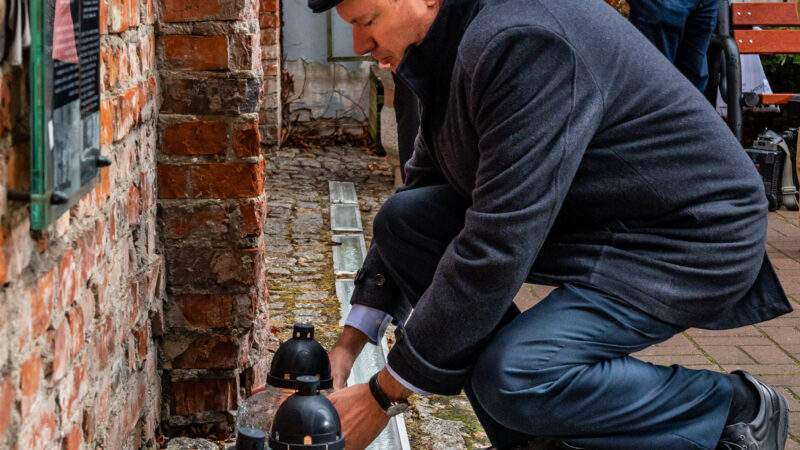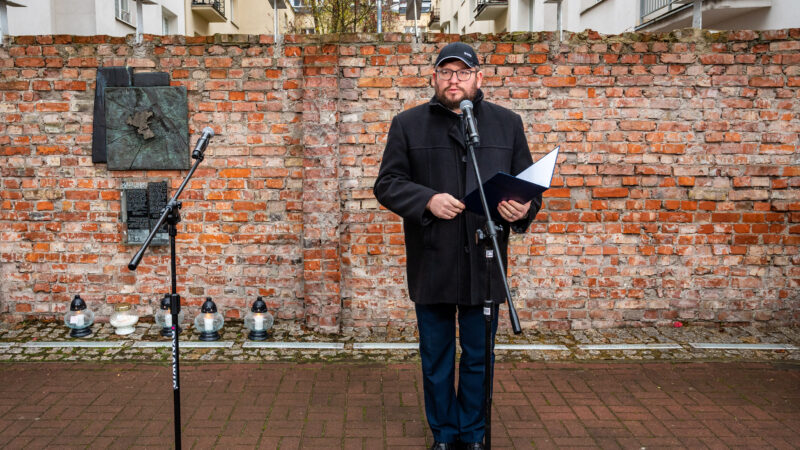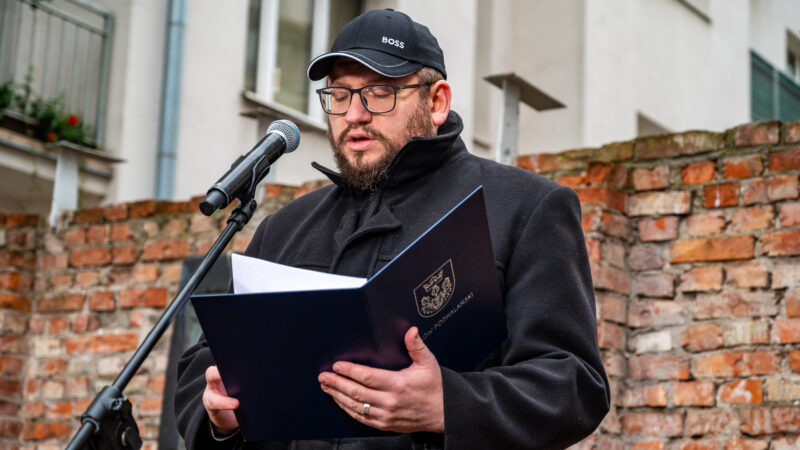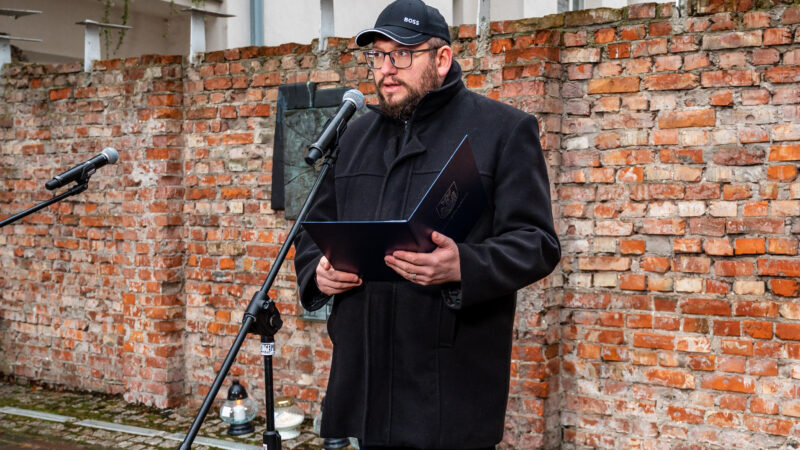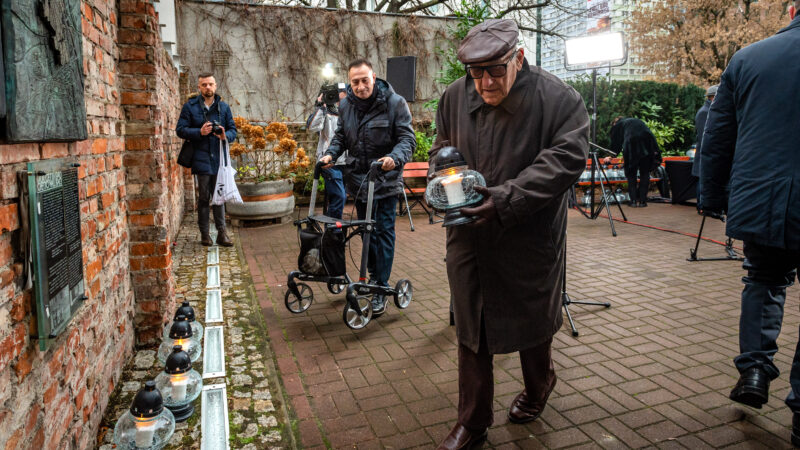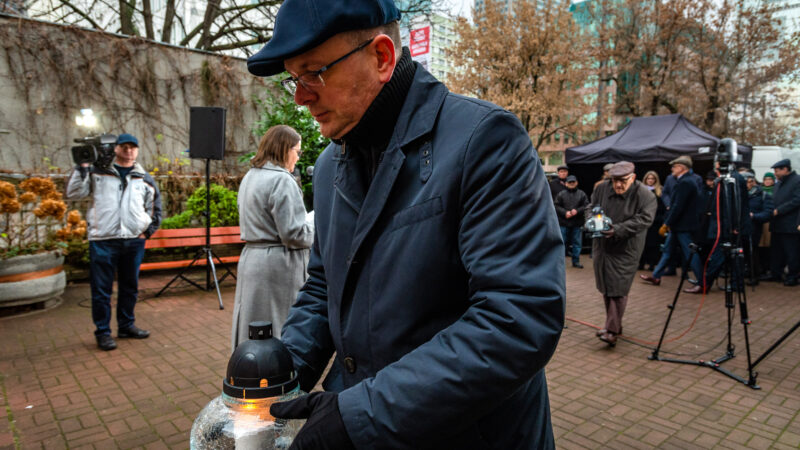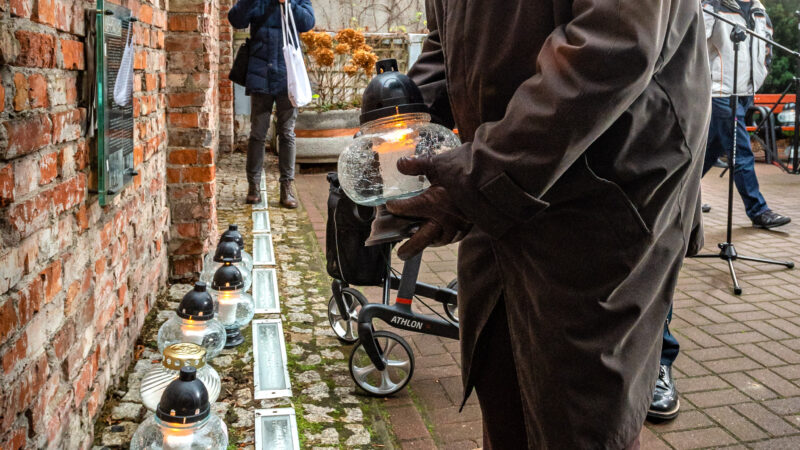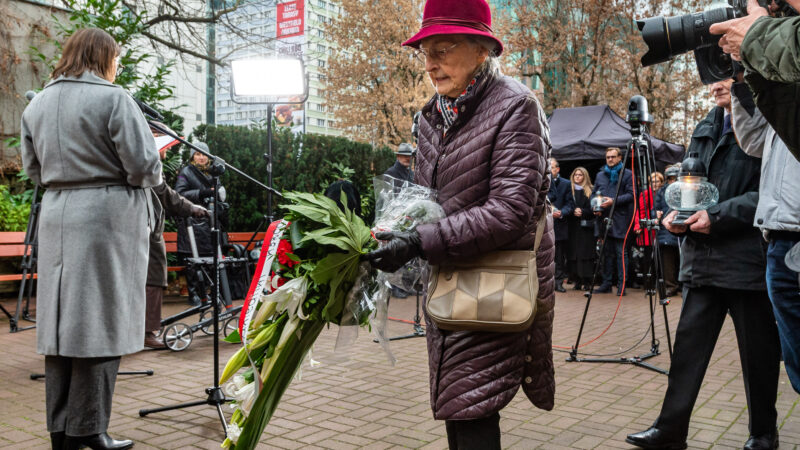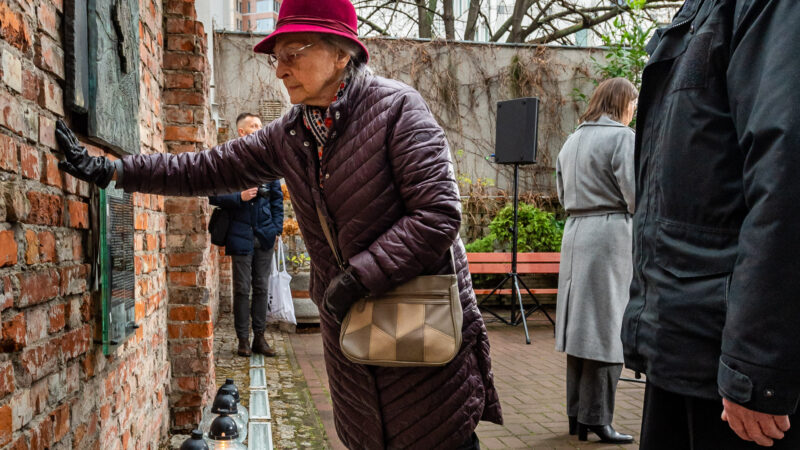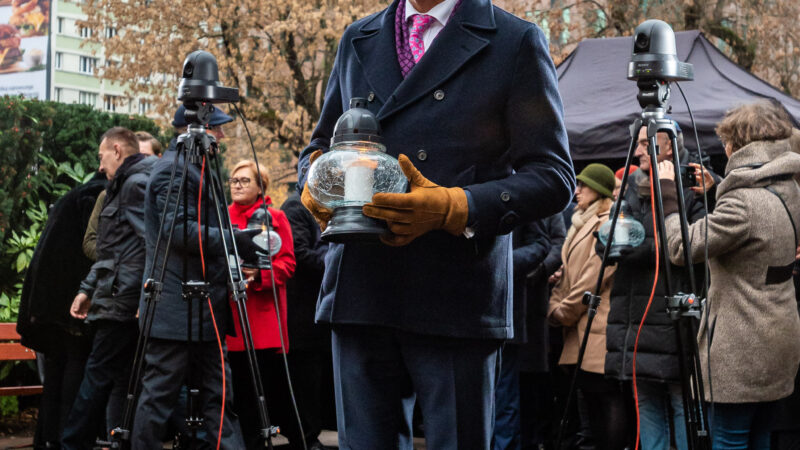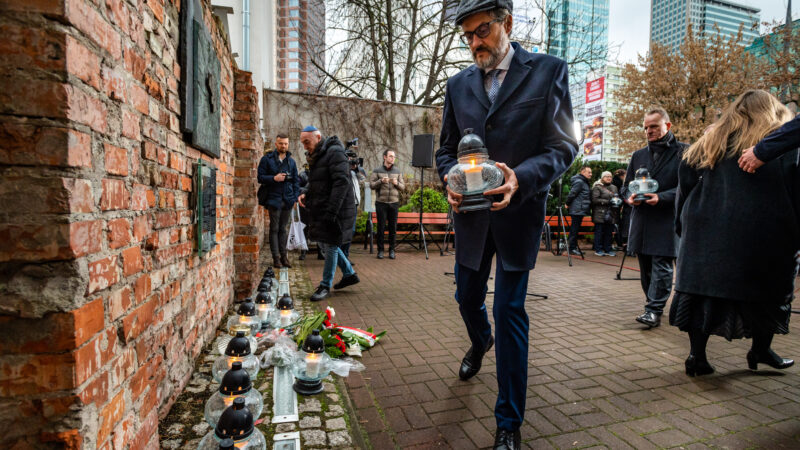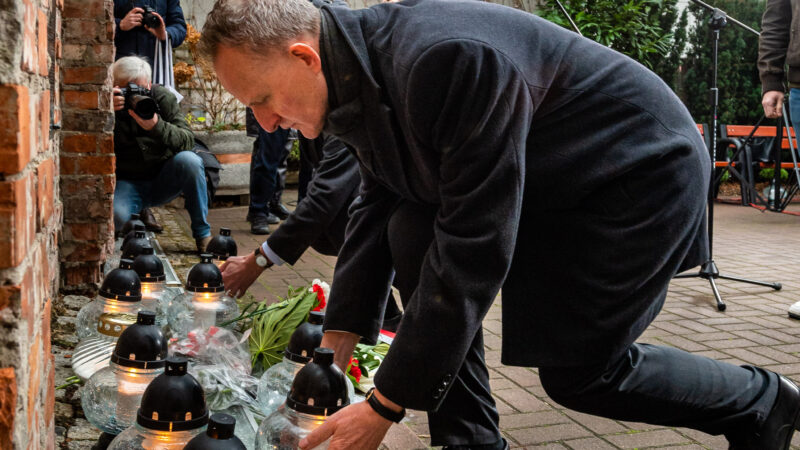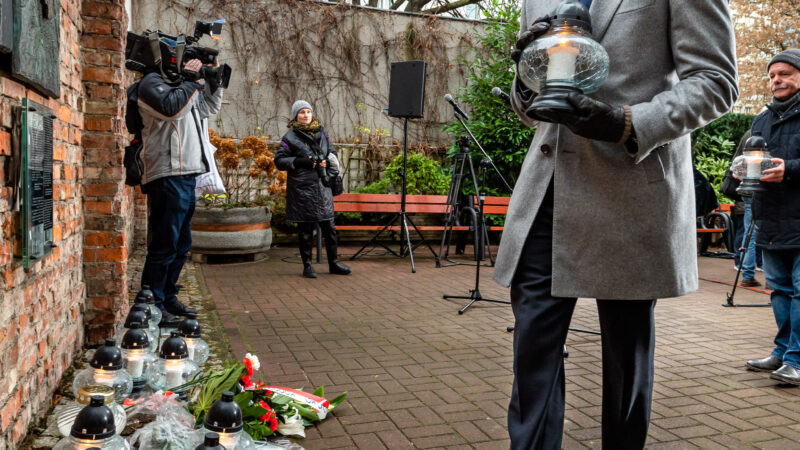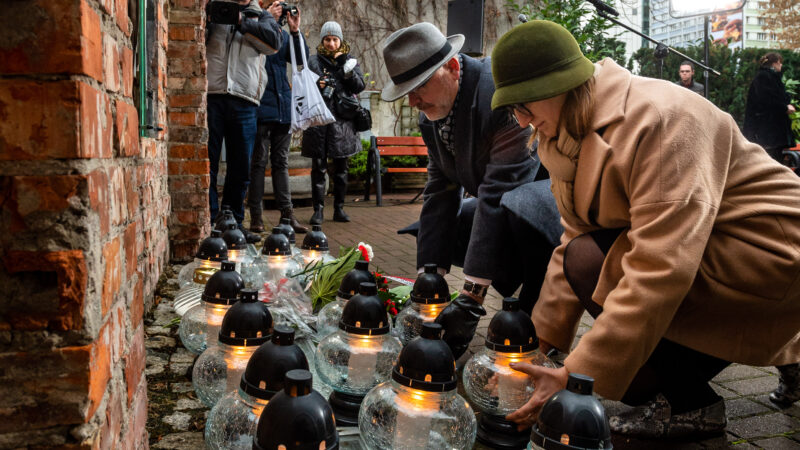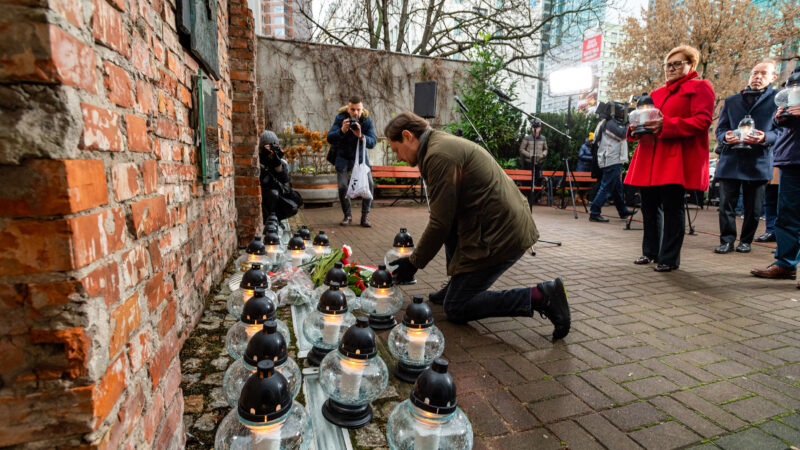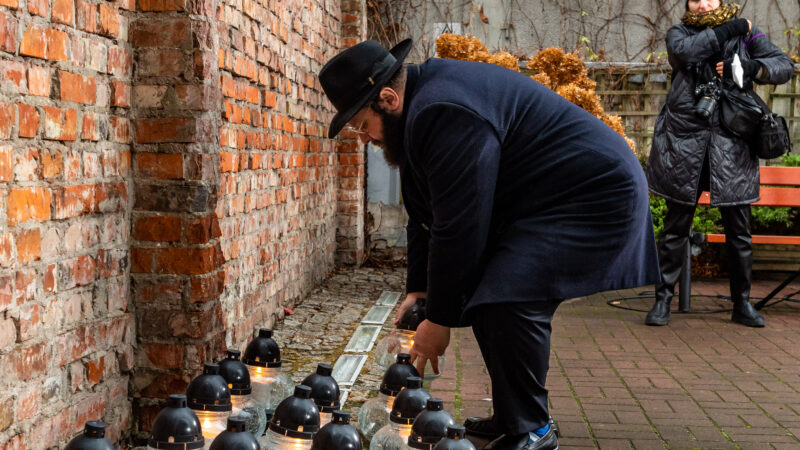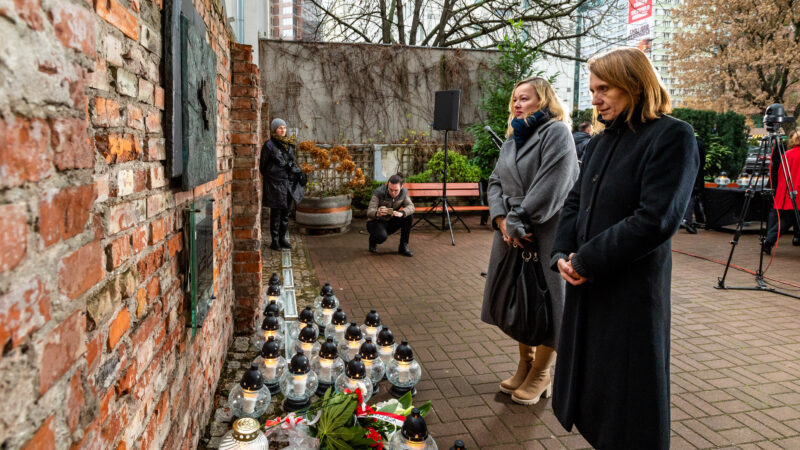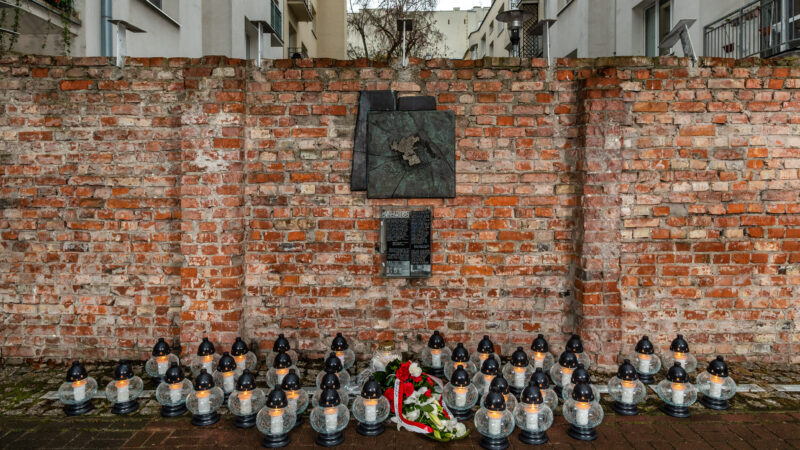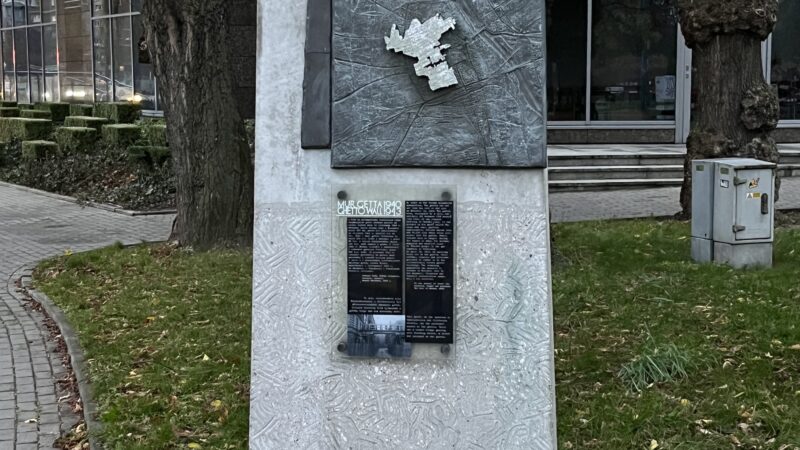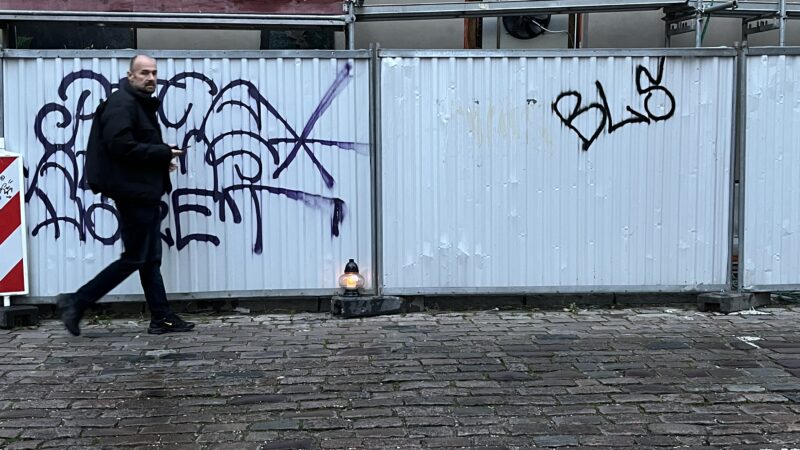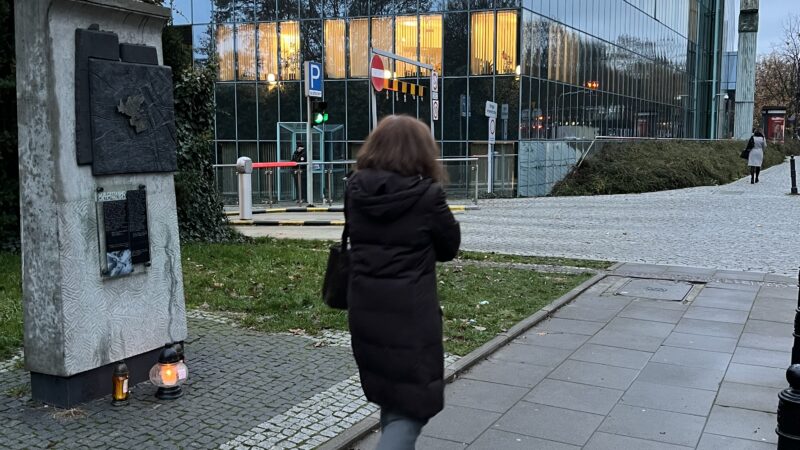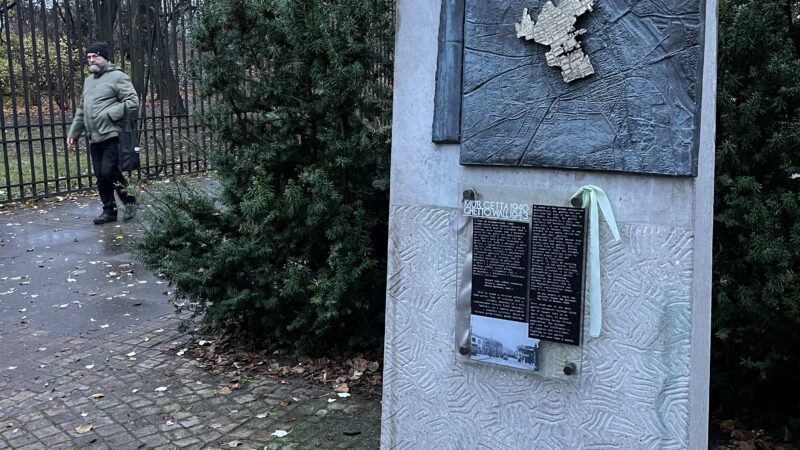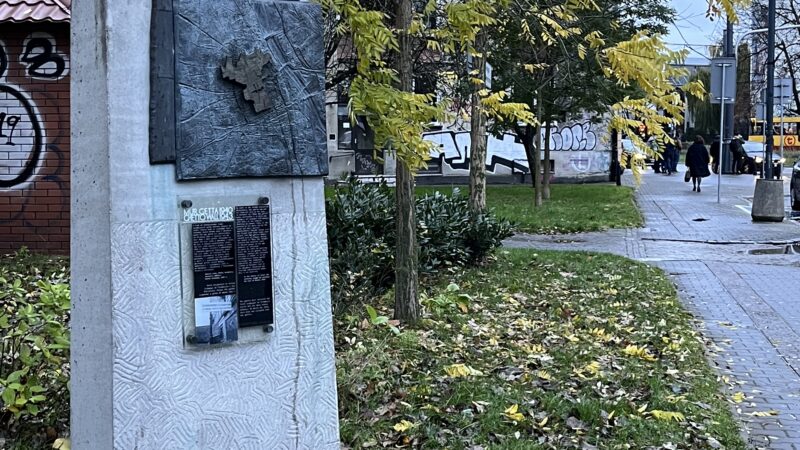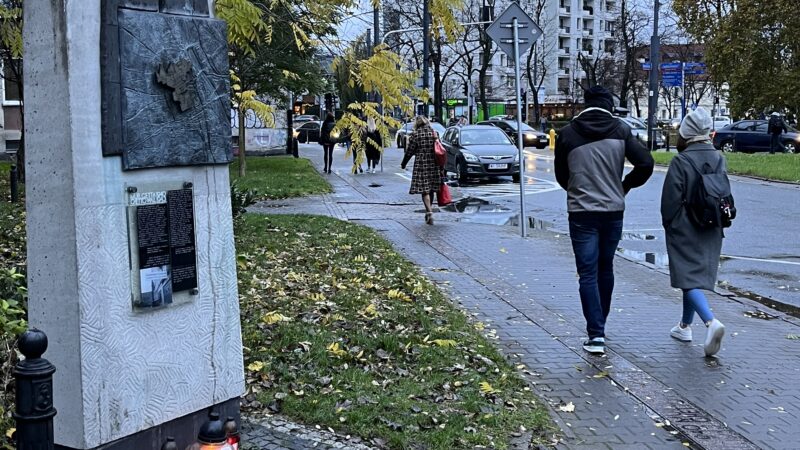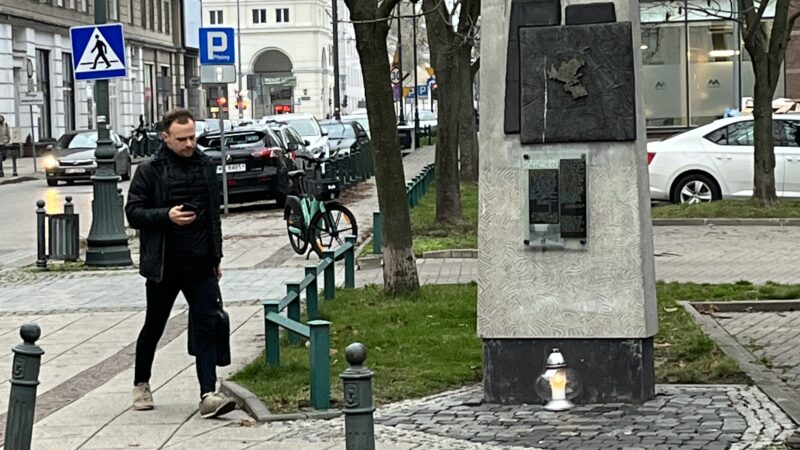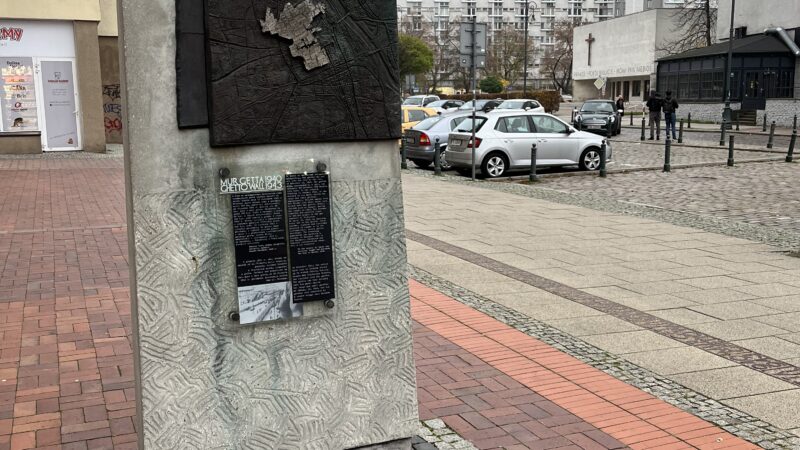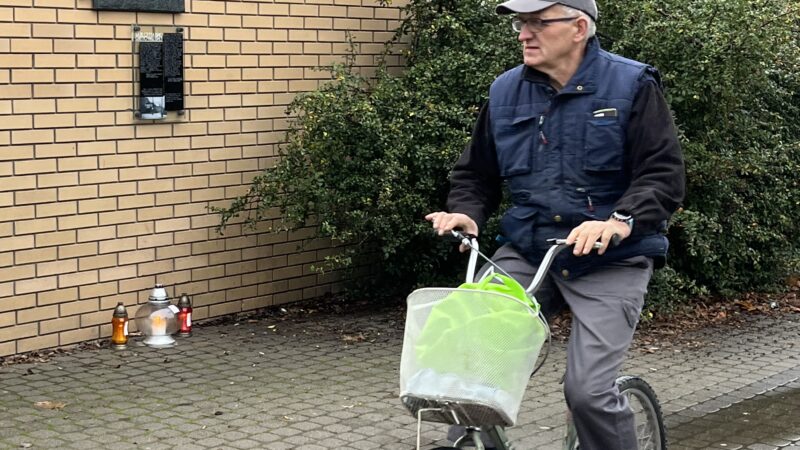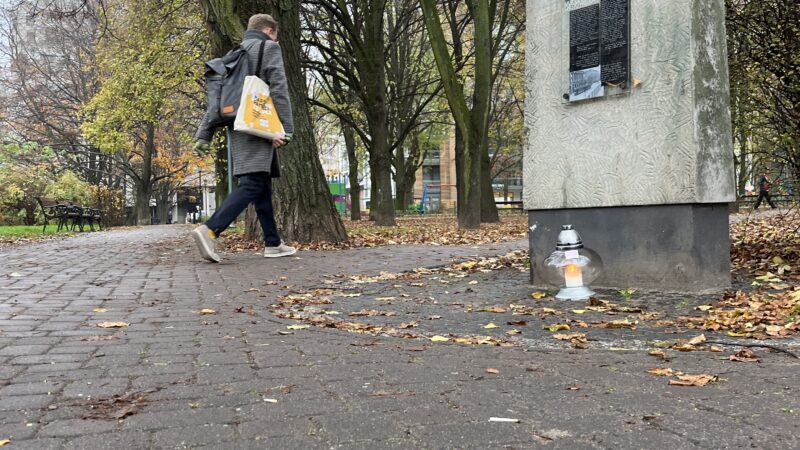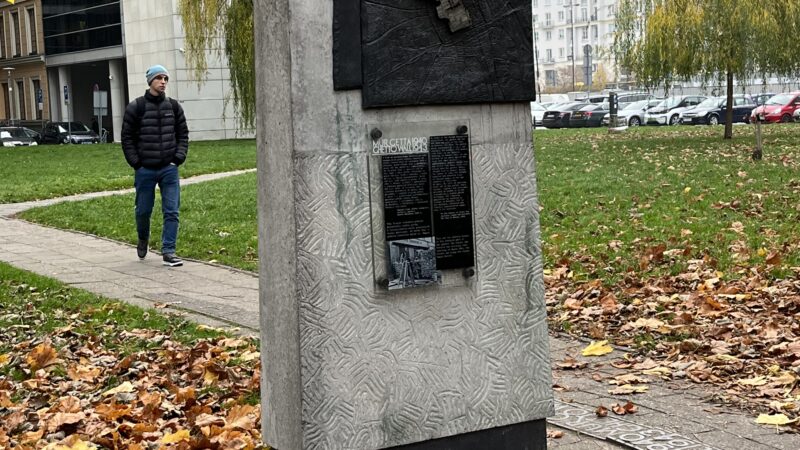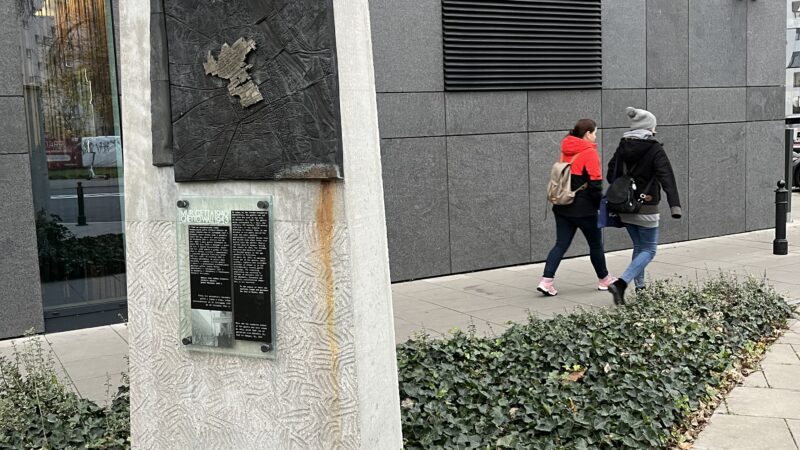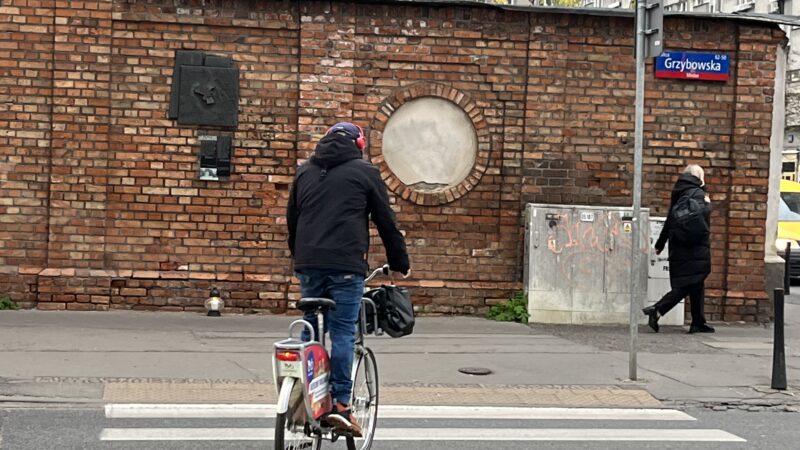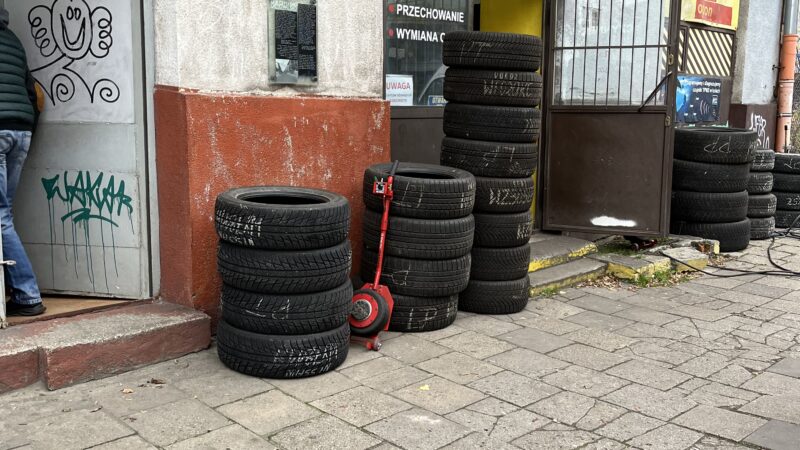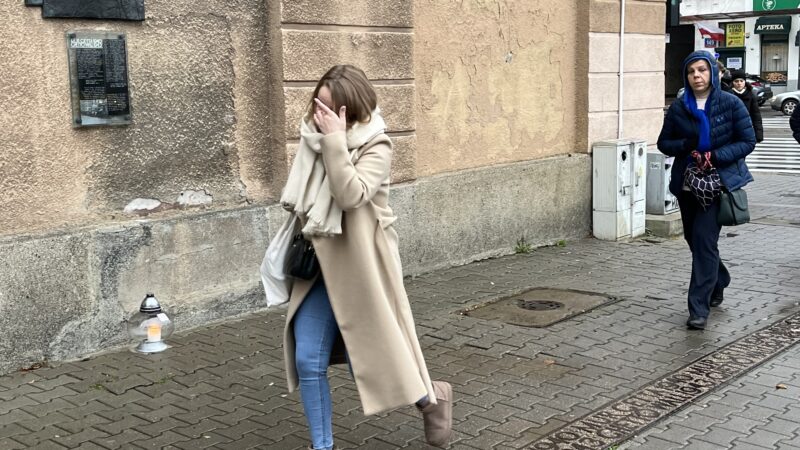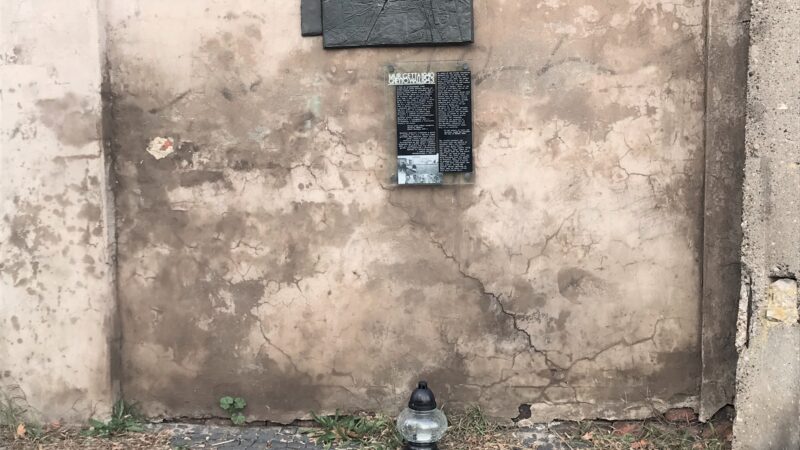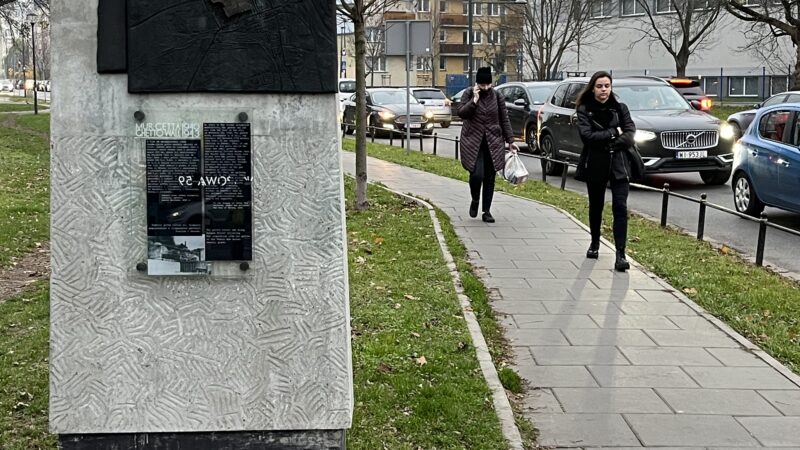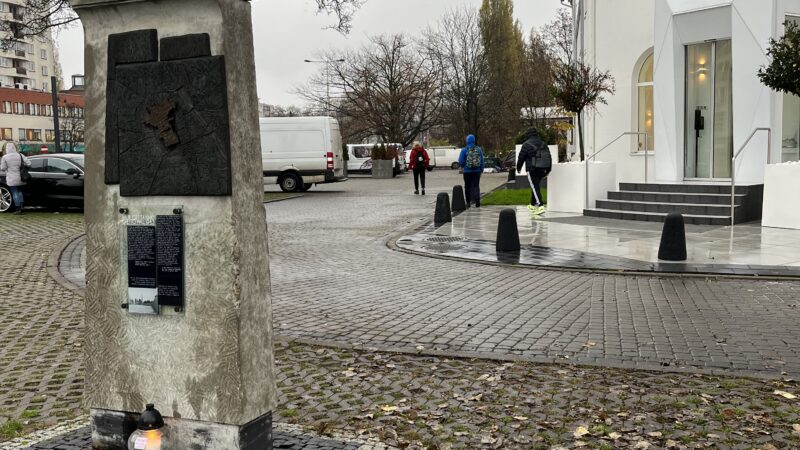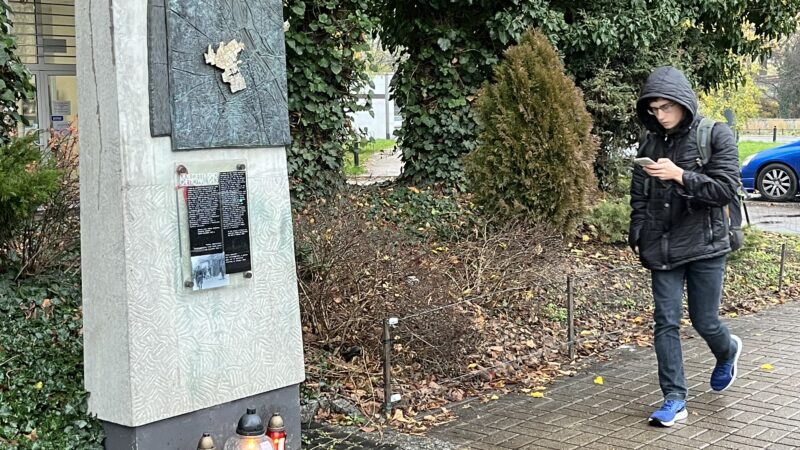Photo Coverage | 82nd anniversary of the Warsaw Ghetto borders closing
November 16 marks a tragic date in the history of Warsaw – on this day in 1942, the Warsaw Ghetto borders were closed, leaving almost 400 thousands of Jews imprisoned. It has been three years since the Warsaw Ghetto Museum started commemorating the victims of the biggest Jewish ghetto in Europe.
This year’s commemoration ceremony started with the unveiling of a new board on the preserved fragment of the ghetto wall at Złota str., 62. The Warsaw ghetto map from November 1940 is printed on it. It replaced the previous board which was installed by a former Armia Krajowa soldier, historian Mieczysław Jędrudszczak, also called “the Guard of the Wall”. However, there were some inaccuracies on the old board, so, with the approval of Mr. Jędruszczak’s family, the decision was taken to replace it with a more up-to-date one.
The new board, which was sponsored by the Warsaw Ghetto Museum, contains information about numerous places where the Ghetto remains can be found. One of them is Bersohn and Bauman Children’s Hospital, the planned location of the WGM. WGM director Albert Stankowski opened the board together with Piotr Jędruszczak, Mieczysław Jędruszczak’s grandson. “This wall, which is indisputable evidence of evil, is also a place where I learned how to live” – Mr. Jędruszczak said. “We hope that this board will serve future generations as a reminder of what had happened here” – Mr. Stankowski added.
The official ceremony of lighting the candles under a preserved fragment of the ghetto wall at Sienna 53 (the area now belongs to XII High School named after Henryk Sienkiewicz) started at 12pm. Representatives of state and local authorities, cultural institutions and diplomats all gathered at the site. Among the guests were: the Secretary of State in the Ministry of Culture and National Heritage Jarosław Sellin, Chief of the Chancellery of the Senate Adam Niemczewski, Chief of the Office for War Veterans and Victims of Oppression Jan Józef Kasprzyk, Ambassadors of Belgium, Israel and Germany Rik van Droogenbroeck, Yacov Livne and Thomas Bagger, Head of the Polish Society of the Righteous Among the Nations Anna Stupnicka-Brando, Vice-President of Jewish Historical Institute Association Marian Turski.
“We have come to this symbolic place to honor hundreds of thousands of ghetto victims, to remind ourselves that they all had their lives, dreams, plans and ideas for the future. May the fire that we light today remind us of their fate and warn us against the possible repeat of the tragedy of the WWII and Holocaust” – Albert Stankowski said at the ceremony opening. “It is our duty as custodians of memory of the Warsaw Ghetto and other ghettos’ in occupied Poland to keep reminding us about what hatred and aggression can lead to and about the costs of the war, especially for civilians” – he added.
“We have to remember what consequences the tolerance of even antisemitic rhetoric can cause” – said the President of the Social and Cultural Association of Jews in Poland Artur Hoffman, another host of the event. He also expressed his gratitude to all the ceremony participants, underlining that their presence means that “the memory of this sad day of November 16, 1940 is not only shared by the Polish Jews”.
Minister Jarosław Sellin stressed the importance of remembering the day when the Warsaw Ghetto borders were closed and thanked WGM for introducing this new tradition. In his turn, minister Jan Józef Kasprzak reminded that the two regimes responsible for WWII, the Third Reich and the Soviet Russia, were driven by „hatred and desire to classify the nations into superior and inferior ones, (…) the desire to invent the new model of the world where only the superior ones are right”. He pleaded “no other countries or nations consider themselves superior”.
The Ambassador of Israel to Poland Yacov Livne delivered a touching speech in which he shared a personal story from the Warsaw Ghetto and thanked everyone „for keeping this memory, for working every day to make sure that (…) the world will not forget”.
The ceremony ended with a prayer in Hebrew and in Polish recited by rabbi Itzhak Rappoport from the Jewish Community of Warsaw.
On November 16, the candles were also lit under commemoration boards in 21 other places which mark the former Warsaw Ghetto borders, including the street corner of Chłodna and Żelazna, Andersa st. in Krasiński Garden and at the corner of Świętojerska and Nowiniarska streets where the carousel at the Krasiński Square was situated.


